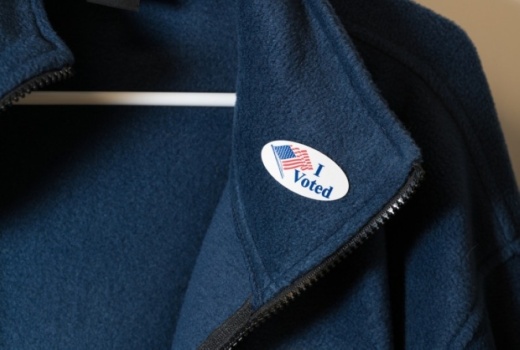The Texas joint runoff and primary election day that was supposed to take place May 26 was delayed due to concerns regarding the COVID-19 pandemic and is now Tuesday, July 14. The deadline to register to vote for that election is June 14, the first day of early voting is June 29 and the last day to apply for a vote by mail ballot to be received, not postmarked, is July 2.
In Collin County, which contains North Texas cities including McKinney and Allen and where there are currently more than 600,000 registered voters, Elections Administrator Bruce Sherbet said officials have been making myriad decisions for the joint July primary and runoff election as well as the November General Election.
Due to anticipated protections needed for voters and poll workers amid the pandemic, Sherbet said one of Collin County’s biggest challenges has been to acquire as much personal protective equipment as possible for each polling place.
Among other tactics, this includes outfitting poll workers with face shields, implementing hands-free options wherever possible throughout the voting process and providing q-tips for screens on voting machines. Training for staff on how to get voters in and out as efficiently and safely as possible has also been a key priority.
“We find the challenge to be how much equipment we can get into each polling place with regard to social distancing,” he said.
Sherbet said he anticipates around a 2% turnout for the July elections, but workers aim to increase the county’s polling locations by 40% in preparation for November.
“November is a different animal, as you can imagine,” Sherbet said, adding that his staff is already in possession of 60,000 mail-in ballot kits and have ordered another 80,000. “Normally we would have about 25,000, but we ordered a lot more in preparation for COVID[-19].”
Collin County will have 100,000 more registered voters this November than during the 2016 presidential election, Sherbet said. That is due both to the overall growth in the county as well as the mounting enthusiasm to vote in the 2020 election, one characterized ubiquitously by voters and candidates as high-stakes from the top down.
“At this point in our job, we just have to plan for the highest turnout we would expect and then move from there accordingly,” he said.
Officials are making similar preparations for July and November elections in Harris County, where staff have been consulting with health experts, community leaders, city, county, and state officials, schools, universities, and both political parties to ensure safe, fair, and efficient elections in July and November, said Chris Hollins, Harris County Clerk.
Hollins said precautions include providing protective equipment to poll workers and voters, recruiting more poll workers, finding larger voting locations to promote social distancing, procuring more voting machines and keeping residents informed about their voting options.
“We are also encouraging voters to vote during the early voting period,” Hollins said.
There are currently almost 2.4 million registered voters in Harris County, the state's most populous county, compared with 2,182,980 who were registered for the 2016 presidential election. Of those, data show 1,338,898 people voted, and Hollins said historical turnouts for November presidential elections in Harris County have been between 60% and 62%. However, the county clerk’s office is preparing for a much higher turnout for July and November.
Earlier in June, Harris County sent out vote by mail applications to 376,840 registered voters who are 65 or older, and Hollins said providing seniors with that option is a top priority.
But, he pointed out there are three other qualifying demographics who may be eligible to vote by mail—those who are out of the county during voting periods, those who are incarcerated but otherwise eligible and those who are disabled.
“The disability term is what has been thrown out in the courts—what does that mean? So, we are trying to provide clarity to folks on what that means,” Hollins said. “And so what the [Texas State] Supreme Court ruling that came down [May 27] said is that lack of immunity to COVID-19 can be used as a factor in determining whether or not you are disabled under [the state’s] definition, but they also said it cannot be the only factor.”
In other words, he said, voters must determine for themselves if they qualify to vote by mail under the disability clause defined by Texas law, which states a voter must have a physical condition that creates a likelihood of injury to one’s health by physically voting.
Once a voter checks off one of the reasons to request a vote by mail ballot, then the county only has to process the application and send the voter a mail-in ballot. The county does not have the authority nor the capability to investigate who does not qualify, Hollins said.
Further explaining the Texas Supreme Court’s decision, Travis County Clerk Dana DeBeauvoir said voters who feel they qualify for a mail-in ballot in should request an application.
“I encourage someone who thinks their health is going to be [affected by voting in person] to vote by mail and check either the ‘over 65’ or ‘disability’ categories, depending on which one fits,” DeBeauvoir said. “The decision the voter makes about whether to vote by mail is entirely their prerogative and their right.”
Regardless of the number of people who end up voting by mail in Travis County’s July 14 primary, runoff and State Senate District-14 election, as well as the November presidential election, DeBeauvoir said her office has spent an extra $1 million to purchase personal protective equipment to ensure the maximum amount of safety possible.
So far, Travis County, which contains 22 cities including Austin, has seen a surge in vote by mail application requests for the July 2020 election at about 21,000, a figure substantially higher than the 2016 May primary election, which saw requests top out at 9,000, according to data from the county.
Also telling is the data-backed evidence with regard to voter enthusiasm this year in Travis County, where there are currently about 886,000 registered voters for the July election, compared with 685,849 for the May 2016 primary.
Upticks in registration numbers combined with the ever-present specter of the COVID-19 pandemic are both catalysts for stricter county elections guidelines, and DeBeauvoir said voters are urged to wear masks. While those who show up to the polls without a mask will still be allowed to vote, they will be distanced as far as possible from other voters, she said.
For the July elections in Travis County, there will be 20 early voting locations and 100 voting centers, and in November there will be 30-34 early voting locations and 200 voting centers on election day. DeBeauvoir emphasized residents may vote at any location they choose and are not limited to specific precincts.
Furthermore, county election staff will make sure their equipment is prepared to make it through elections without causing delays for voters, she said, adding Travis County is going on its third election using ES&S ExpressVote machines, which are ballot making devices that have a paper trail. Should there be malfunctions, the county has contingencies in place, she said.
DeBeauvoir said Texas is different from many other states in the U.S. because its counties run their own elections and are therefore able to cater their elections processes to the patterns of their constituencies.
“We have all kinds of procedures and steps and additional support that we put in place just so that doesn’t happen like it did in Georgia,” DeBeauvoir said, referring to that state’s June 9 elections, during which it was widely reported that thousands of voters were turned away after hours of waiting at some polling locations only to be told voting machines had broken or malfunctioned. “If one [voting machine] breaks down, we have a call out to repair [it] within 10 minutes. We have a crew with extra supplies rotating through the community during voting times so that we can get to these locations quickly should anything happen.”
For more information on upcoming elections in Texas, click here.





